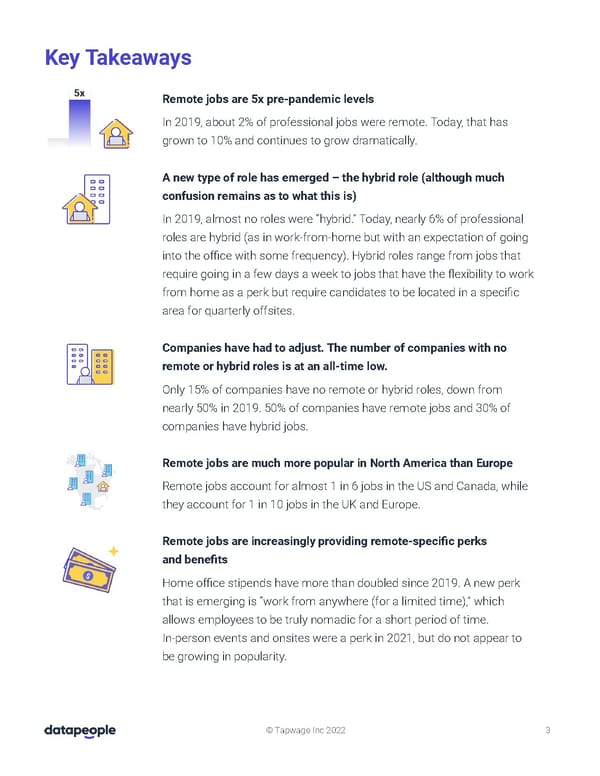Key Takeaways Remote jobs are 5x pre-pandemic levels In 2019, about 2% of professional jobs were remote. Today, that has grown to 10% and continues to grow dramatically. A new type of role has emerged – the hybrid role (although much confusion remains as to what this is) In 2019, almost no roles were “hybrid.” Today, nearly 6% of professional roles are hybrid (as in work-from-home but with an expectation of going into the office with some frequency). Hybrid roles range from jobs that require going in a few days a week to jobs that have the flexibility to work from home as a perk but require candidates to be located in a specific area for quarterly offsites. Companies have had to adjust. The number of companies with no remote or hybrid roles is at an all-time low. Only 15% of companies have no remote or hybrid roles, down from nearly 50% in 2019. 50% of companies have remote jobs and 30% of companies have hybrid jobs. Remote jobs are much more popular in North America than Europe Remote jobs account for almost 1 in 6 jobs in the US and Canada, while they account for 1 in 10 jobs in the UK and Europe. Remote jobs are increasingly providing remote-specific perks and benefits Home office stipends have more than doubled since 2019. A new perk that is emerging is “work from anywhere (for a limited time),” which allows employees to be truly nomadic for a short period of time. In-person events and onsites were a perk in 2021, but do not appear to be growing in popularity. © Tapwage Inc 2022 3
 Hiring in Distributed World Page 3 Page 5
Hiring in Distributed World Page 3 Page 5